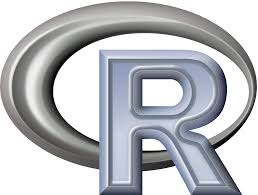Here is a comprehensive compilation of many R commands that most of the scientists can find useful for analyzing research data.
Basics
- Check working directory:
getwd()
- Change working directory:
setwd("path")
- Show help about a command (quotes are important):
help("command")
?"command"
- Show the objects and variables of the working space:
ls()
- Remove an object from the working space:
rm(x) rm(list=ls()) # Removes all the objects
- Save the working space:
save.image() # in the file .RData at the working directory save(object list,file="myfile.RData") # saves the object list into the chosen file
- Reload a working space:
load("myfile.RData")
- Quit R:
q()
Vectors and matrices
- Create a vector:
x=c(1,2,4,8,16) y=c(1:10) z=c(rnorm(n))
- Operations with vectors:
x=c(x)+n # adds 'n' to each element z=c(x,y) # combines 2 vectors creating a linear one z=cbind(x,y) # combines 2 vectors creating a 2 columns matrix z=rbind(x,y) # combines 2 vectors creating a 2 rows matrix replace(x,x==0,NA) # Replaces zeros by NA
- Operations with matrices:
mat[4,2] # shows the 4th row and the 2ng column mat[3,] # shows the 3rd row mat[,2] # shows the 2nd column mat[,-3] # deletes the 3rd column mat[-2,] # deletes the 2nd row mat[1:3,3:5] # show the rows 1 to 3 and the columns 3 a 5
Frames
- Create a frame from a vector list (each vector will be a frame column):
data.fr=data.frame(x1,x2,x3 …)
- Create a frame from a matrix:
as.data.frame(mat)
- Check if an object is a frame:
is.data.frame(mat)
- Convert a frame into a matrix:
as.matrix(data.frame)
- Read a tab-separated data file with the names of its columns on the 1st row and save it into a frame:
data.fr<-read.table("ruta fichero",header=T,sep="t")
- Show the names of frame columns:
names(data.fr)
- Show the names of frame rows:
row.names(data.fr)
- Show the number of frame rows:
nrow(data.fr)
- Show the first frame rows:
head(data.fr, n=10) # 10 first rows
- Create vectors with the name of each column in the frame (and its data)
attach(data.fr) detach(data.fr) # remove the vectors
- Add a row to frame:
data.fr <- rbind(data.fr,data.frame(colA=1,colB="abc",colC=rnorm(1)))
- Add a column to a frame:
data.fr$colC <- data.fr$colA + 5 * data.fr$colB
- Filter a frame to obtain a subset of data and save it in a new frame:
subset.frame<-subset(data.fr,colA>=5 & !is.na(colB) | ColC='V') subset.frame<-subset(data.fr,complete.cases(data.fr)) # Obtain only the rows with data in all the columns
- Order a frame:
data.fr[order(data.fr$colB),] # Order a frame with the values of the column B data.fr[rev(order(data.fr$colB)),] # Reverse order
Statistics
- Calculate several statistical parameters from a dataset:
max(x) min(x) mean(x) median(x) sum(x) var(x) # variance covariance matrix sd(x) # standard deviation mad(x) # median absolute deviation fivenum(x) # Tukey fivenumbers min, lowerhinge, median, upper hinge, max Table(x) # Matriz de frecuencias scale(x,scale=T) # centers around the mean and scales by the sd cumsum(x) # cumulative sum cumprod(x) cummax(x) cummin(x) rev(x) # reverse the order of values in x
- Correlation matrix:
cor(x,y,use="pair") # correlation matrix for pairwise complete data, use="complete" for complete cases
- Correlation test:
cor.test(x,y,method=c('pearson'))
- ANOVA (Analysis of variance):
aov.1 <- aov(colA~colB,data.fr) # one way analysis of variance (colA contains values and colB contains classes) aov.2 = aov(colA~colB*colC,data.fr) #do a two way analysis of variance summary(aov.1) #show the summary table print(model.tables(aov.1,"means"),digits=3) #report the means and the number of values/class boxplot(colA~colB,data.fr) #graphical summary appears in graphics window
- Lineal regresion:
fit<-lm(colB~colA,data.fr) #basic linear model where x and y can be matrices (see plot.lm for plotting options) summary(fit) plot(data.fr$colA,data.fr$colB) abline(fit)
- Student’s t-Test:
t.test(x,g)
pairwise.t.test(x,g)
power.anova.test(groups = NULL, n = NULL, between.var = NULL,
within.var = NULL, sig.level = 0.05, power = NULL)
power.t.test(n = NULL, delta = NULL, sd = 1, sig.level = 0.05,
power = NULL, type = c("two.sample", "one.sample", "paired"),
alternative = c("two.sided", "one.sided"),strict = FALSE)
Graphics
- List of available colors in R:
colors()
- Graphic parameters:
help(par)
- Simple graph::
plot(x,y,type="p") # types: “p”: points, “l”: line, … plot(x,y,col="red",lwd=2,type="l")
- Draw a point:
points(2,5,pch=16,col="blue",cex=3) # Draws the point (2,5) in blue and with a relative size of 3
- Label the point:
text(2,5,label="Point label",pos=4,offset=-0.5,font=3,cex=0.75)
- Scatter plot:
plot(data.fr$colA, data.fr$colB, main="Column A vs. Column B", xlab="Column A", ylab="Column B", cex.main=2, cex.lab=1.5, pch=1)
- Graph overlay:
lines(1-spec, sens, type='b', col=39, pch=7, lty=2) plot(data.fr$colA, data.fr$colB, main="Column A vs. Column C", cex.main=2, cex.lab=1.5, pch=1, add=TRUE)
- Small graph into a bigger one:
year <- 1900:2000
dollars <- (year-1899)^2
plot.within.aplot <- function()
{
par(pin=c(1.5,1.5)) ### set the plot region size in inches
par(mai=c(2.8,1.2,1,2.6)) ### set the 4 margin sizes in inches
par(ps=6) ### set the font size to 6 point
plot(year,dollars,col="blue",type="l",xlab="",ylab="") ### no axis labels
par(new=T) ### the next plot will plot over the previous one
par(ps=12) ### set the font size to 12 point
par(pin=c(4.14,3.57)) ### set the plot region size back to the default
par(mai=c(.956,.769,.769,.394)) ### set the margins back to the default
plot(year,dollars,col="green",type="l") ### plot
}
plot.within.aplot()
Data output
- Graph window options:
X11() # open a new window in Linux windows() # open a new windows in Windows dev.list() # show the open windows dev.cur() # show the working window dev.off() # close the working window dev.set(3) # select the window 3 as working one dev.off(3) # close the window 3 graphics.off() # close all the windows
- Open a PDF file to output data:
pdf(file=”outfile.pdf”)
My original article in Spanish:
http://bioinfoperl.blogspot.com/2010/06/algunos-comandos-de-r-utiles-en-ciencia.html
Inspired by:
http://www.personality-project.net/r/r.commands.html
http://www.statmethods.net/graphs/scatterplot.html
http://www.ats.ucla.edu/stat/R/notes/


Leave a Reply